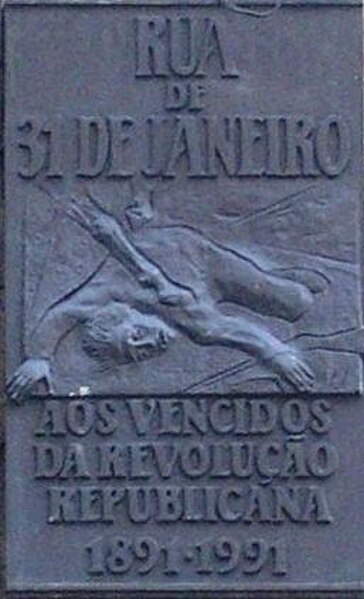History of Portugal (1834–1910)
The Kingdom of Portugal under the House of Braganza was a constitutional monarchy from the end of the Liberal Civil War in 1834 to the Republican Revolution of 1910. The initial turmoil of coups d'état perpetrated by the victorious generals of the Civil War was followed by an unstable parliamentary system of governmental "rotation" marked by the growth of the Portuguese Republican Party. This was caused mainly by the inefficiency of the monarchic governments as well as the monarchs' apparent lack of interest in governing the country, aggravated by the British ultimatum for the abandonment of the Portuguese "pink map" project that united Portuguese West Africa and Portuguese East Africa.
The imperfect Constitution of 1826, that begin a conflict within liberal revolutionaries; former-King and Regent (with Consort: left) introducing the 1826 Charter to Princess Maria da Gloria
Costa Cabral, one-time radical whose interest in French doctrinaire politics, would return Chartists to power
Cartoon showing an idealized Maria da Fonte leading the rebels: an idealized representation of women's roles during the peasant revolt of 1846
Fontes Pereira de Melo, an important politician in the period of rotativism politics
5 October 1910 revolution
The 5 October 1910 revolution was the overthrow of the centuries-old Portuguese monarchy and its replacement by the First Portuguese Republic. It was the result of a coup d'état organized by the Portuguese Republican Party.
Contemporary commemorative illustration of the Proclamation of the Portuguese Republic on 5 October 1910.
Commemorative plaque on 31 de Janeiro Street, in Porto.
Eudóxio César Azedo Gneco, also known as Azedo Gneco, one of the main leaders of the Portuguese Socialist Party, giving a speech at a republican gathering in Lisbon (1 May 1907)
Anonymous reconstruction of the regicide published in the French press








